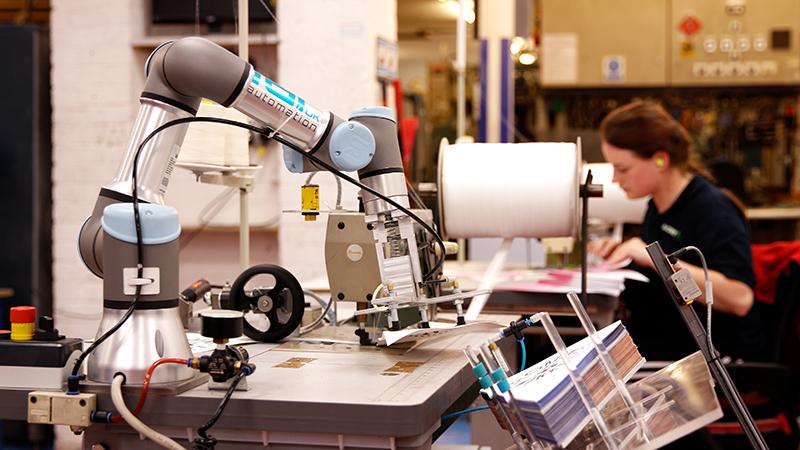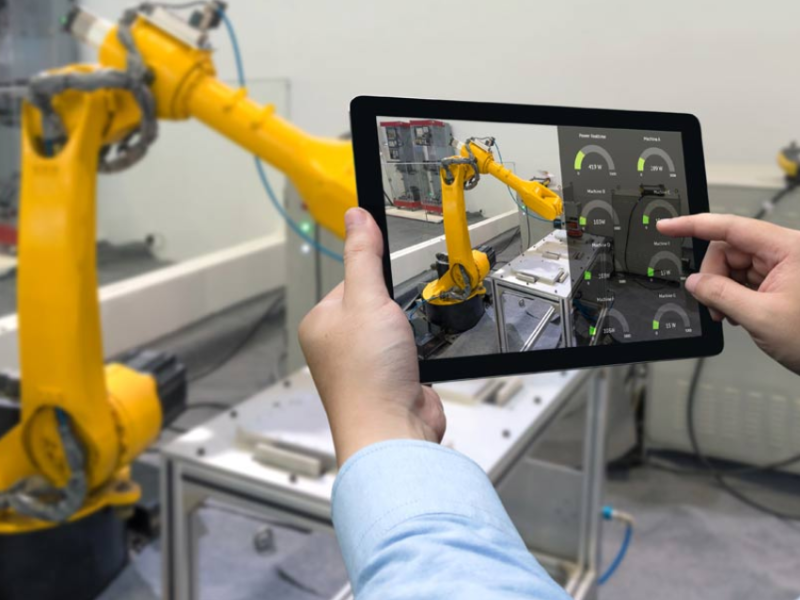Cobots can be used to automate millions of tasks – from detailed work right through to palletising. “Each cobot model is better suited to certain tasks and it’s our job to work alongside our customers to determine what will work best for them” explains Masayuki Mase, Country Manager for Universal Robots Oceania. “For instance, a UR3e is a tabletop model that will suit a business looking to automate non-load-bearing tasks, while a larger cobot arm such as the UR10e can be used to automate heavier jobs.”
Versatility all the way
For a small business, the fact that cobots have many uses remains one of their biggest assets. They can be reprogrammed to fill gaps that emerge in virtually any area of the business, from palletising to production line, in very little time. And one core component is responsible for cobots’ versatility: their end effectors.
Masa explains: “End effectors, also known as end of arm tooling (EOAT), are a vital component of all cobots. They are attached to the end of the robotic arm and allow it to carry out specific tasks. One cobot could handle upwards of a dozen tasks over the course of a working week - depending on a business’s needs.”
Other reasons to opt for cobots
Compared to the large and bulky industrial machines, cobots are designed to safely operate near humans to complete tasks. Traditional industrial robots are often mammoth-sized machines that are static and difficult to repurpose and reprogram. By contrast, cobots are compact and flexible and can operate without safety cages or fencing directly alongside people (upon risk assessment), thereby reducing footprint and space usage.
Cobots, unlike humans, do not suffer from fatigue and can work 24/7, 365 days per year, repeating each task in the same way. Therefore, with none of the human errors caused by fatigue, cobots provide higher business productivity, efficiency, and product quality. Cobots are highly flexible, allowing them to be reprogrammed for different tasks if manufacturing processes change, making them more investment worthy.
Top five cobot applications unpacked
While cobots can be used for everything from soldering to screwing and sanding, 70% of the applications fall within three categories, namely: ‘pick and place’, assembly and material handling - closely followed by welding and palletising.
Masa helps to unpack these applications as follows:
- Pick and place
Forming part of material handling, cobots performing pick and place tasks work quickly and accurately and can be programmed to select the right parts and reject unsatisfactory pieces. “Commonly used in the electronics industry to solder parts onto printed circuit boards (PCBs), cobots work with great speed and accuracy – 24/7.” He adds: “This helps to boost capacity whilst keeping production costs low.”
- Assembly
While some tasks on an assembly line require skills, attention to detail and the careful eye of a human, others are monotonous or even dangerous. “Using cobots on an assembly line can increase the pace of production, protect workers from harm and ensure the irreplaceable people in your business are being utilised in the most effective way.” says Masa.
- Material handling
In manufacturing, material handling refers to the movement, protection, storage and control of materials and products throughout manufacturing, warehousing, distribution, consumption, and disposal. This is often one of the most dangerous jobs in manufacturing as materials such as metals, plastics, and other substances can pose a great risk to human workers. Additionally, many material handling tasks are repetitive, which can give rise to repetitive strain injury and errors due to fatigue. “Interestingly, manufacturing plants that use robots see significantly fewer workplace injuries.”
- Welding
Universal Robots has cited a recent uptick in welding application demand. “A cobot adds flexibility, efficiency, and freedom to welding processes. In addition, when the task is completed, it can be easily redeployed to other areas where it can add value.”
- Palletising
Palletising applications take place at vast majority of manufacturers across the globe and require many final products be moved onto a palette as quickly and efficiently as possible. “The demand to automate palletising tasks has increased exponentially over the years, largely due to the strain and overexertion that it places on workers.
To conclude, Masa says that cobots are growing in presence and popularity around the globe. “This is largely driven by their budget-friendly price tag, easier programming which reduces implementation and training time, and safety qualities.”






